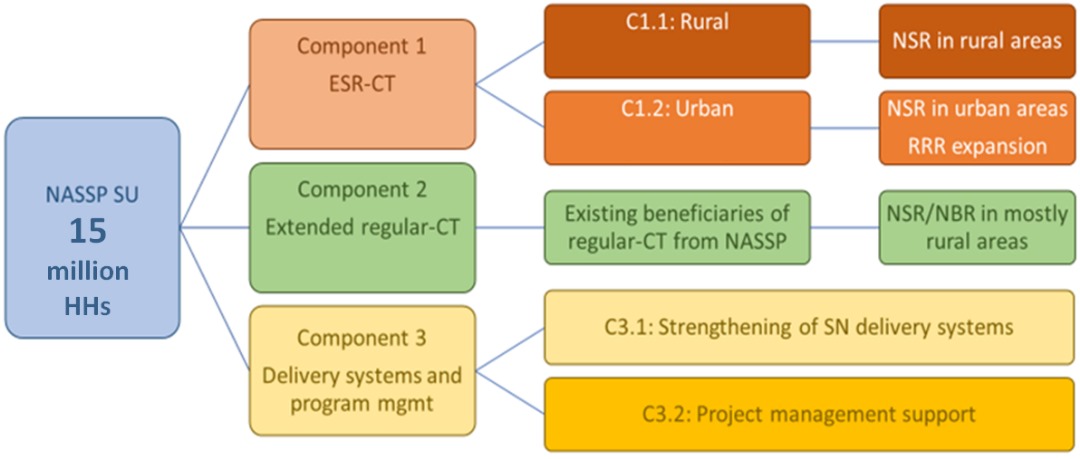As follow-on operation to the NASSP, the NASSP-SU builds on and scale up the existing delivery system to provide shock responsive safety nets and to extend regular social assistance to poor and vulnerable Nigerians. The project is designed to offer time-limited cash transfers in response to recent shocks (food price inflation) in rural as well as urban areas. The project will also extend the duration of support to the current beneficiaries of NASSP regular cash transfer program.
Project Development Objectives (PDOs)
The broad objective of the project is to expand coverage of shock responsive safety net support among the poor and vulnerable and strengthen the national safety net delivery system.
Project Development Objectives: Level Indicators
The following key results will measure the achievement towards the Project Development Objective (PDO):
The first three indicators measure progress towards coverage expansion of shock responsive safety net support among the poor and vulnerable whereas the last two indicators measure the strengthened safety net delivery system.
Another key intermediate indicator (percentage of Beneficiaries that are below the bottom 2 quintile) relates to the targeting performance of the ESR-CT. This indicator measures the share of ESR-CT beneficiary households in the bottom 2 quintiles of the national distribution of welfare ranking scores.
Gender and citizen engagement are important dimensions of the results to be achieved by the project. These will be monitored through the outcome indicators listed above as well as intermediate indicators looking at specific aspects of gender and citizen engagement.
This project is expected to meet urgent needs and mitigate economic shocks while building a shock responsive safety net system that can help adapt to future shocks. The project will help households secure basic needs, diversify livelihoods, and invest in human capital. The increased resilience will allow beneficiaries to avoid negative coping mechanisms that may have irreversible adverse impacts on human capital (e.g., through reduced nutrition, schooling, and healthcare), including in response to economic and climate shocks.
